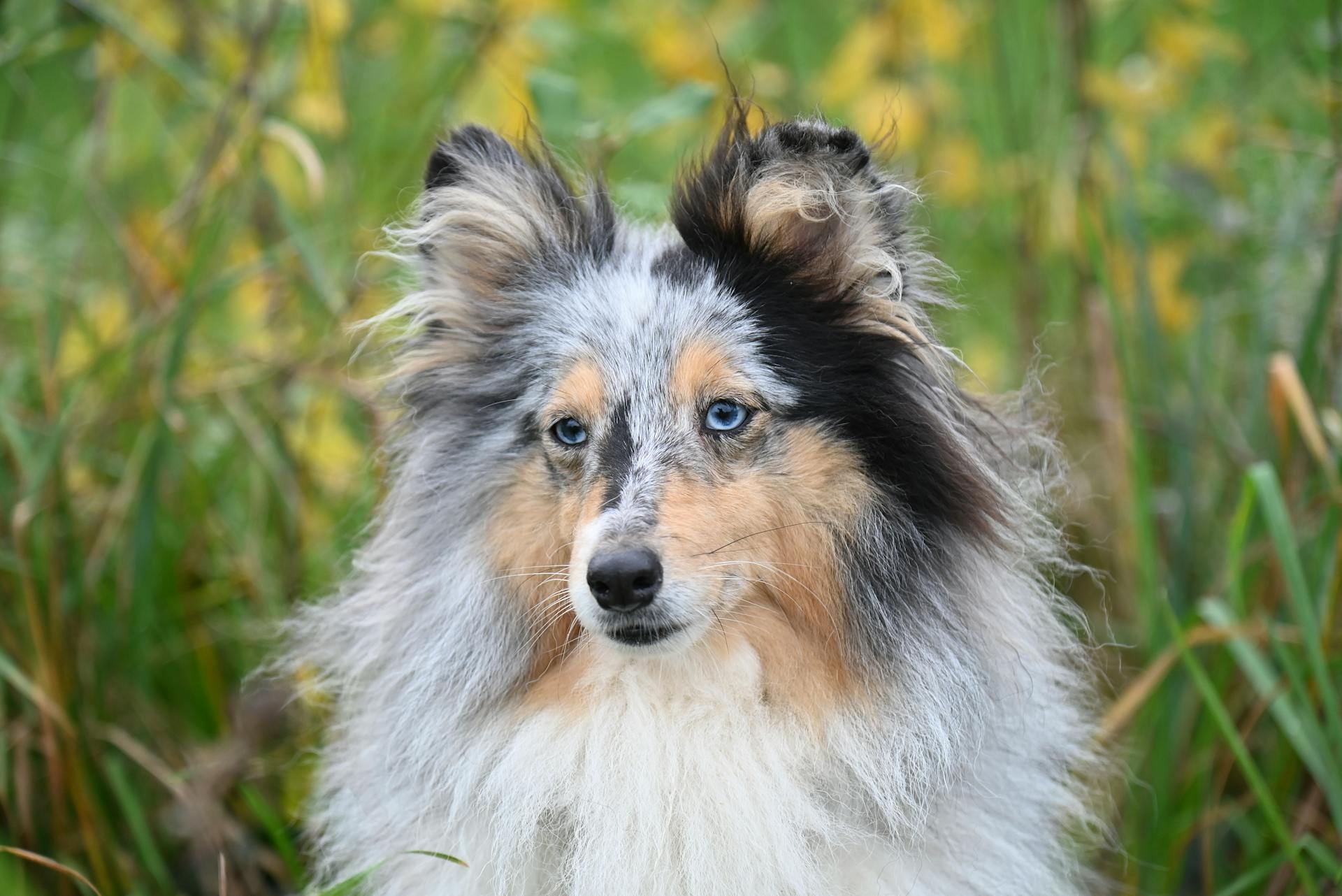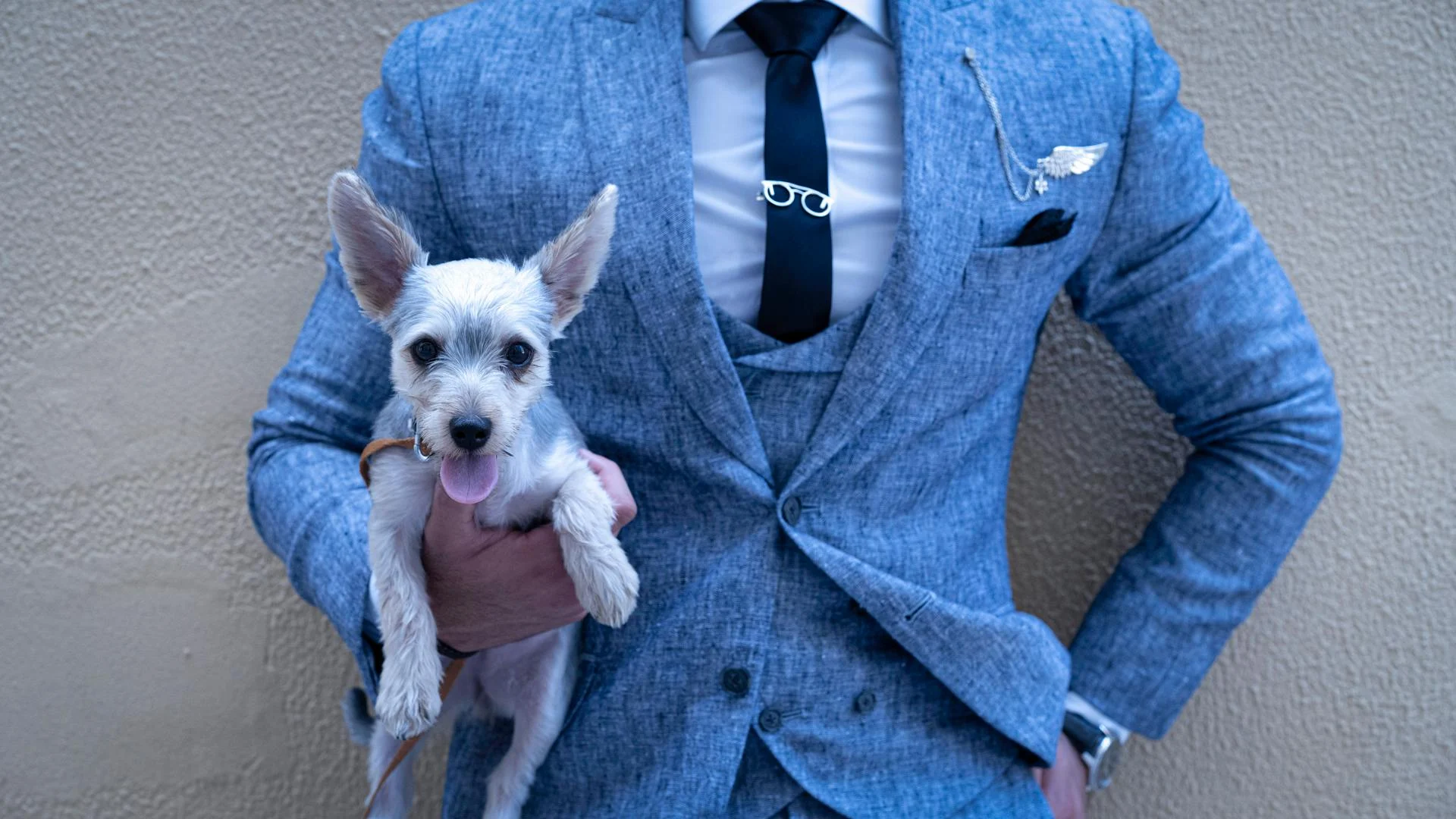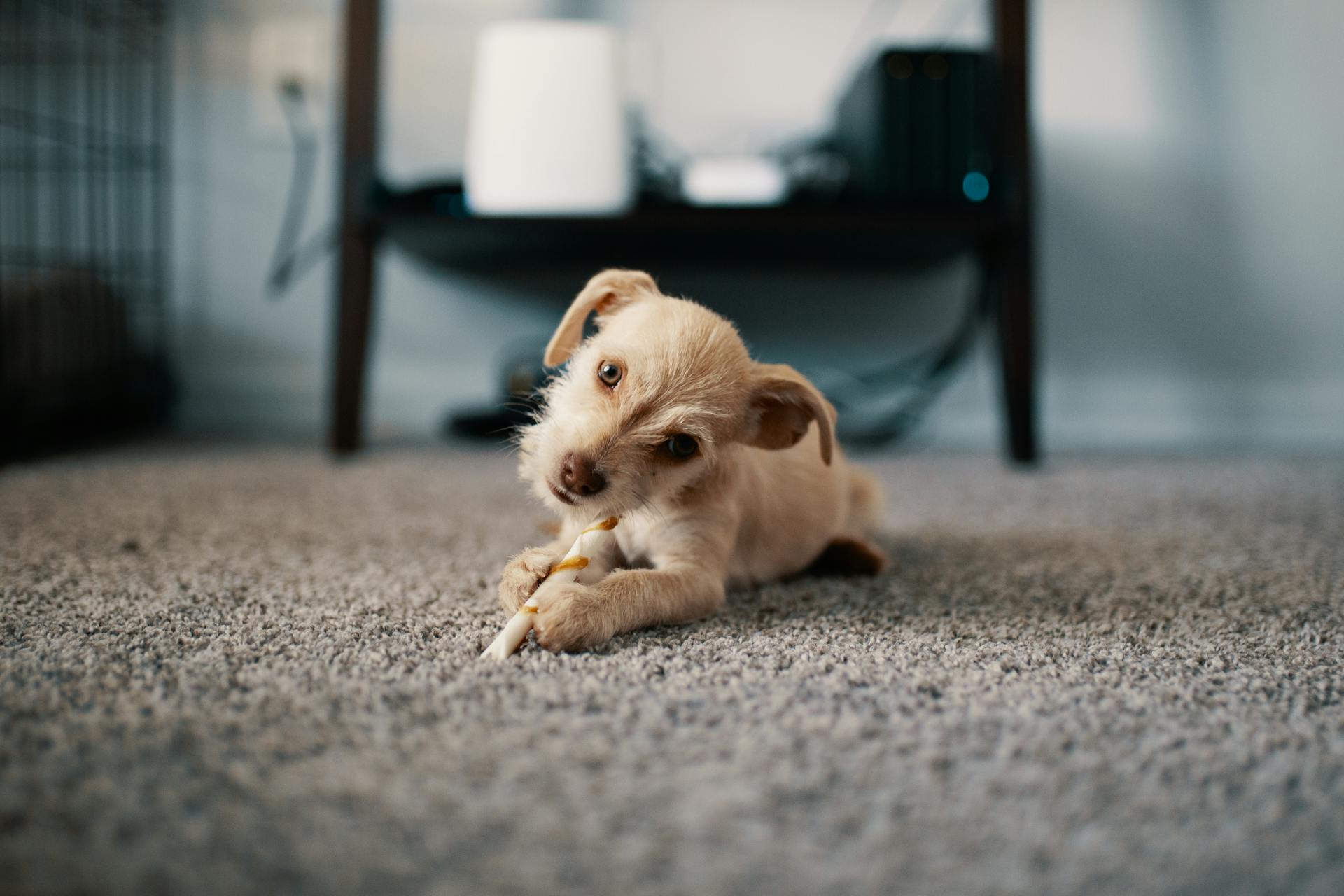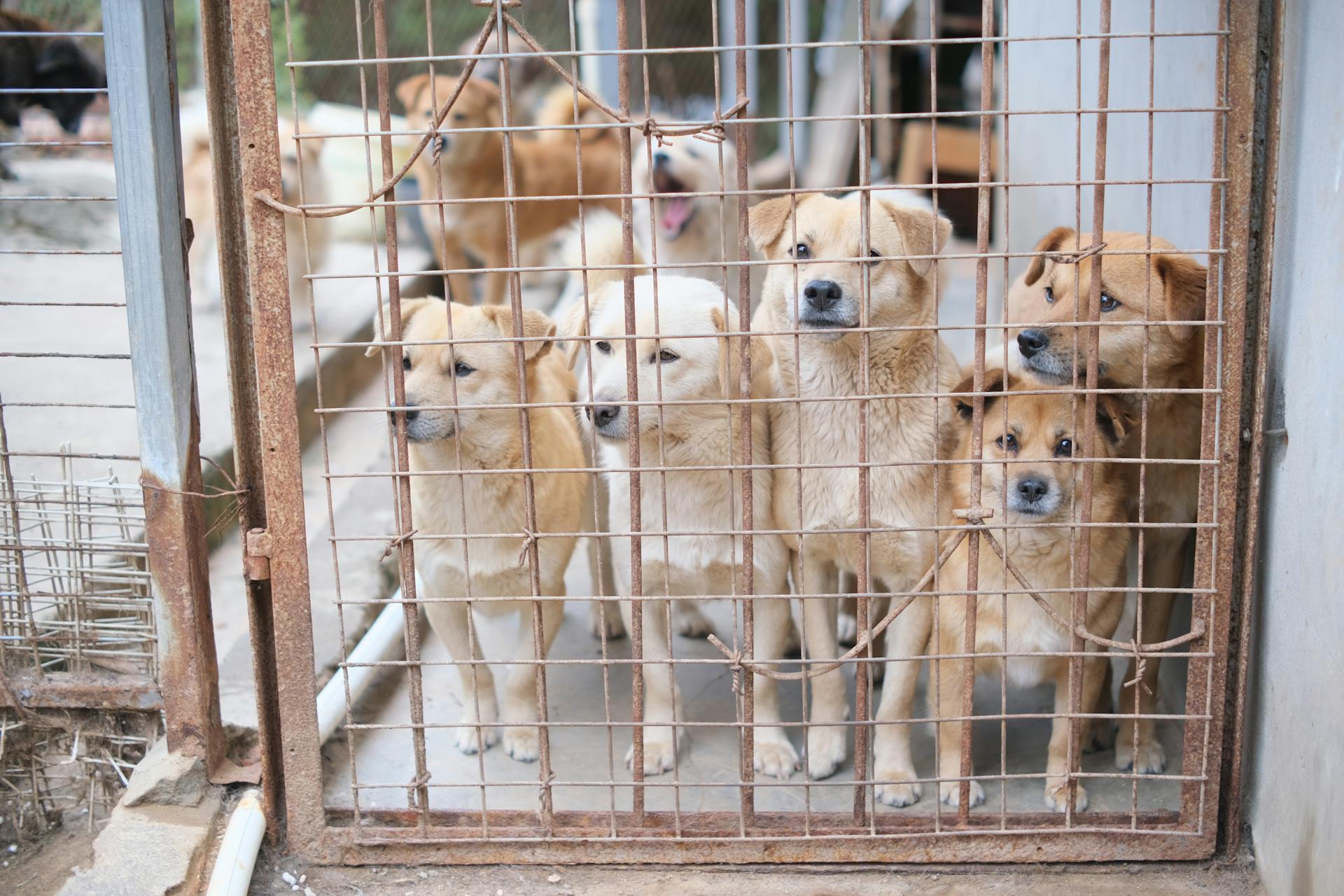
Welcoming a Catalan Sheepdog puppy into your family is a big decision, and it's essential to be prepared for the responsibilities that come with it.
These dogs are highly intelligent and active, requiring regular exercise and mental stimulation to prevent boredom and destructive behavior.
Catalan Sheepdogs are naturally protective of their families and can be wary of strangers, making socialization crucial from an early age.
With proper training and care, they can thrive as loving and loyal companions.
If this caught your attention, see: Catalan Sheepdog
Puppies
Catalan Sheepdog puppies are natural herders, often showing herding behaviors while still very young.
As a high-energy breed, you can expect high-energy puppies that require plenty of exercise and mental stimulation.
The Catalan is an intelligent breed, making them quick to learn with consistent training.
You'll need to be patient and committed to training your Catalan puppy, as they can be strong-willed at times.
This breed isn't recognized by most large dog fanciers' clubs, which may make it difficult to find a reputable breeder.
It may be expensive to find a Catalan puppy, due to the limited number of breeders in the US.
If this caught your attention, see: Are Border Collies High Maintenance
Breed Details
The Catalan sheepdog is a rare breed, with a life expectancy of 12-14 years. This means you'll have plenty of time to enjoy their loving company.
They typically weigh between 40-60 pounds and stand between 16-19 inches tall, making them a medium-sized dog. Their sturdy build is perfect for active families and homes with large yards.
Here are some key breed details:
- Status: Rare
- Life Expectancy: 12 - 14 years
- Weight: 40 - 60 lb
- Height: 16 - 19"
- Rare: Yes
- Coat: Medium
- Grooming Requirements: Once a week
- Town or Country: Either
- Minimum Home Size: Small House
- Minimum Garden Size: Small to Medium Garden
- Breed Type: Herding
- Size: Medium
- Energy Level: Medium
- Exercise Required: Up to 1 hour
Breed Origin
The Catalan Sheepdog has a rich and ancient history that spans thousands of years. It originated in Catalonia, Spain, and was developed for the purposes of herding and guarding livestock.
The breed's origins date back to the period of Roman Empire expansion around 200 to 100 B.C. The Romans brought with them two types of dogs, one used for defense and protection, and the other for herding cattle.
These dogs were mated with native Catalan dogs, resulting in the foundation of various breeds, including the Catalan Sheepdog. The breed's population declined dramatically after the 2nd World War, with some specimens being destroyed and others rarely bred.
The breed's versatility and amiable personality made it a ubiquitous presence in Catalonia from the Middle Ages. It was trained as a messenger dog during the World Wars and Spanish Civil War.
A group of enthusiasts came together in the 1970s to purchase the remaining dogs and establish an organised breeding programme. This was successful, but the breed's small average litter size of three to four pups has meant that the increase in numbers has been gradual.
The Kennel Club granted the breed full recognition in 2009, and has since registered double-digit numbers of new entrants each year. This is a testament to the breed's growing popularity and the efforts of enthusiasts to preserve its legacy.
Three Little-Known Facts
Here are three little-known facts about breeds that you might find interesting:
The breed originated in ancient times, with evidence suggesting it dates back over 4,000 years to the Indus Valley Civilization.
The breed's distinctive coat pattern is a result of a natural genetic mutation that occurred in the 19th century.
Some breeds are naturally more prone to certain health issues due to their genetic makeup, such as hip dysplasia in larger breeds.
Character and Temperament

The Catalan Sheepdog is a wonderful breed option for families, known for its gentle demeanor and strong work ethic.
They are extremely energetic dogs that need daily exercise and will thrive if given a job.
This breed loves spending time with its people, as well as its charges, whether that be livestock, children, or other pets.
Catalan Sheepdogs are a hardworking breed that enjoys being given a task to do.
Primarily developed to herd and monitor sheep in Catalonia, this breed can be depended upon to guard the sheep even without instructions from the farmer.
They are good all-round dogs who adapt well into a range of family settings, but their herding instincts will often kick in and they may try to take control around the house.
Early socialization and training will pay dividends, and it is particularly good to get them used to meeting children.
They are protective of their human family, making them a good guard dog.
You might like: Sheep Dog Herding
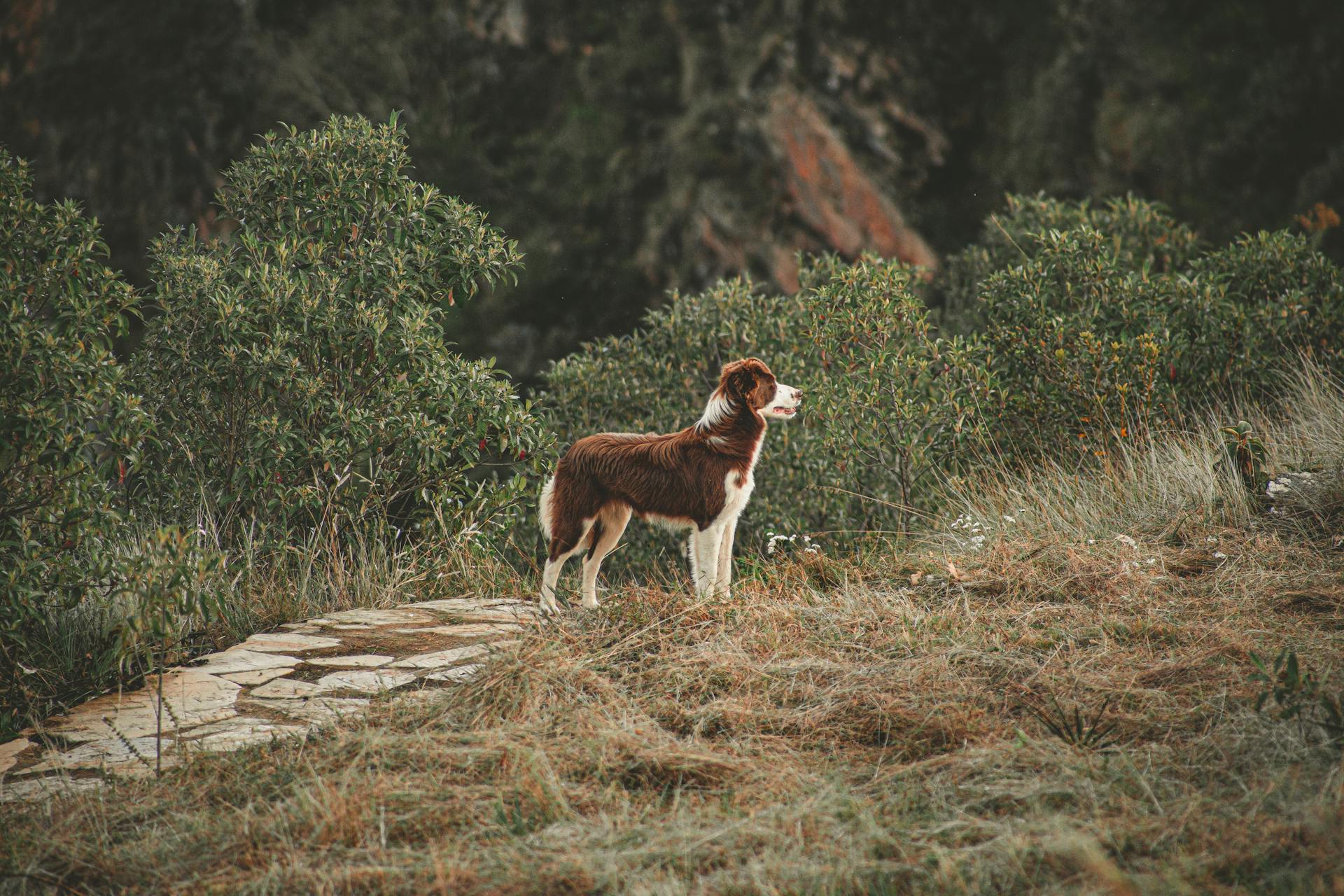
This breed displays intelligence and a certain degree of independence, although it is extremely devoted to its family.
They are not a clingy or needy dog, but will be quick to protect family members, especially children, if they feel threatened.
Children tend to be treated like lambs, and the Catalan Sheepdog can display extraordinary tenderness and consideration around the very young.
These gentle obedient dogs make great family pets and are good around children.
They have a patient nature and are rarely aggressive.
They can be wary of strangers, but good socialization at a young age should prevent any problems.
They are easy to train, and love being close to their owners.
They respond well to fair and consistent training, with lots of praise necessary to encourage them.
Their intelligence means that they can become bored easily, but training, long walks and lots of games in the garden will prevent destructive behavior.
They need a fair amount of exercise - a long daily walk and the chance to run around will keep them happy.
A unique perspective: Will Shiba Inu Coin Reach 1 Cent
Health and Grooming
Catalan Sheepdog puppies require regular grooming to prevent mats and tangles in their thick, double coat.
Their coat sheds in two stages, first the front half of the body, then the back half, so be prepared for a lot of loose hair.
Daily brushing may be necessary, especially if your puppy spends a lot of time outdoors.
Pet bath wipes and waterless shampoo can be used to maintain the health and cleanliness of the coat between baths.
Their long coat largely takes care of itself, but regular brushing is still necessary to remove dead loose hair and prevent tangles.
A comb or a firm-bristled brush used three to four times a week is the preferred approach.
Keep their ears clean and their nails trimmed short, making sure to trim the back dewclaws, as they can grow into the pads if not kept trimmed.
The breed exhibits an unusual moulting pattern, with hair lost first from the front half of the body, then from the rear, giving them a slightly odd appearance for a time during the process.
It's essential to be aware of the potential health problems that can affect the breed, including hip dysplasia, patellar luxation, epilepsy, progressive retinal atrophy, glaucoma, and various dental issues.
Readers also liked: Do Border Collies Bark a Lot
General Health
The Catalan Sheepdog is a generally healthy breed, but they do suffer from some health issues. Hip dysplasia is a significant concern for this breed.
Their joints can cause them a lot of pain if left untreated. Patellar luxation, or dislocation of the knee, is another common problem.
Epilepsy is a serious condition that can be unpredictable and frightening for both the dog and its owner. Progressive retinal atrophy can lead to blindness if left untreated.
Glaucoma is another eye condition that can cause severe pain and vision loss. Various dental issues can be a nuisance and require regular veterinary check-ups.
Regular veterinary check-ups can help catch these health issues early on, making treatment much more effective.
Intriguing read: Rhodesian Ridgeback Health Problems
Grooming & Bathing
Regular brushing is a must for this breed, especially if they spend a lot of time outdoors. Brushing multiple times per week is recommended to prevent mats, tangles, and debris from being caught in the coat.
Pet bath wipes and waterless shampoo can be used to maintain the coat's health and cleanliness between baths. This is especially useful for busy owners who may not have time for frequent baths.
The long rough coat doesn't require extensive grooming, but regular brushing is still necessary. Brushing three to four times a week with a comb or firm bristled brush will remove dead loose hair and prevent tangles.
Bathing should be done only when necessary, as frequent washing can reduce the coat's natural weatherproofing. This helps keep the coat in good condition and prevents damage.
Combing the hair two to three times a week is a good approach to maintaining the coat's health. This helps prevent matting and tangling, and keeps the coat looking its best.
Frequently Asked Questions
How big are Catalan Sheepdogs?
Catalan Sheepdogs typically range from 17 to 19 inches in height and 45 to 60 pounds in weight. Males are slightly larger than females.
What is similar to a Catalan Sheepdog?
The Catalan Sheepdog shares similarities with breeds like the Briard, Picardy Sheepdog, Pyrenean Sheepdog, and Beauceron, all of which were originally bred for herding sheep. These breeds likely share a common ancestry, making them similar in origin and purpose.
What is the other name for Catalan Sheepdog?
The Catalan Sheepdog is also known as the Gos d'Atura Català or Perro de Pastor Catalán.
Featured Images: pexels.com
